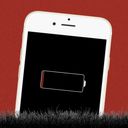The hot new debate over the future of the smartphone

Published Date: 6/15/2019
Source: axios.com
Just 12 years after the first iPhone, almost every conceivable smartphone consumer on the planet currently owns one — some 4 billion people, according to the consensus. Which has begotten a surprising new trend: a still-small but growing chorus of forecasts (like this) of the smartphone’s demise. What’s happening: According to the smartphone naysayers, it might look like we are bionically tethered to our devices, but we are actually poised to shed our reliance on them, one function after another. We will turn to our cars to make phone calls, send and receive texts, and get directions. Wearables and home smart assistants will do tasks, make payments, and help us stay on schedule. The big picture: It is always hard to picture a dramatic change in our accustomed lifestyle, and that can be especially so with technology. The horse-riding populace of the late-19th century did not imagine the automobile revolution only shortly to come. And, more recent and pertinent, very few if any people predicted as late as 2006 that, beginning just a year later, they would gladly fork over $750 for a phone. In a round of Axios emails to tech analysts, investors and professors, we heard the broad observation that we are at peak smartphone because of market saturation, and that the device as we precisely know and use it may in fact be soon old hat. But there was deep skepticism that we are anywhere near giving them up entirely for something else. “While some will call for [the smartphone’s] demise over time, we do not see that even with binoculars on looking ahead,” said Dan Ives, managing director of equity research at Wedbush. In a May blogpost, Benedict Evans, a partner at Andreesen Horowitz, said that smart phones are at the peak of their cycle now. “I’m not updating my smartphone model anymore,” he wrote. In an email exchange with Axios, Evans suggested that we are in a long, technological interregnum:“Smartphones are getting towards the top of the S Curve (the way PCs have) — all the easy, obvious innovation is done, and diminishing returns have set in. Most of the remaining big improvements are (probably) around the camera (and that’s mostly in software),” Evans said. But, he adds, “we don’t have a replacement yet.” Wearables and AR are years away from being mass market, and neither look likely to be “the hub of everything you do online,” like today’s smartphone. Between the lines: The idea of the hub — of one device that does everything — will be hard to improve on. Why would massive numbers of people exchange such a device for a half dozen or a more that do our stuff separately? “Even when the world around us will be full of sensors and every device will be connected – which will take considerable time — I still wonder if a single device will have to be a constant,” said Carolina Milanesi, an analyst with Creative Strategies. The name of the device may change, but its singular nature will remain the same. “So maybe it will be called a smart digital identity unit rather than a smartphone.” What the smartphone of the future may become: Smartphones themselves will morph with better connectivity, compute, and display technologies than today’s devices, says Prabal Dutta, a professor at the University of Michigan. From there, they will become the dominant augmented reality interface in non-gaming and non-industrial applications.And they will stand in until the public is more ready for wearables like Google Glass, and batteries are powerful enough to run them for a reasonable length of time. Adds James Cham, a partner with Bloomberg Beta: “One day we'll have audio interfaces implanted next to our ears and ways to send thoughts through direct brain interfaces." The bottom line: "For the next few years you are going to have to deal with awkward devices in your pocket and accidentally running into people as both of you stare downward (as my son just did on Tuesday while we were walking on the National Mall).”